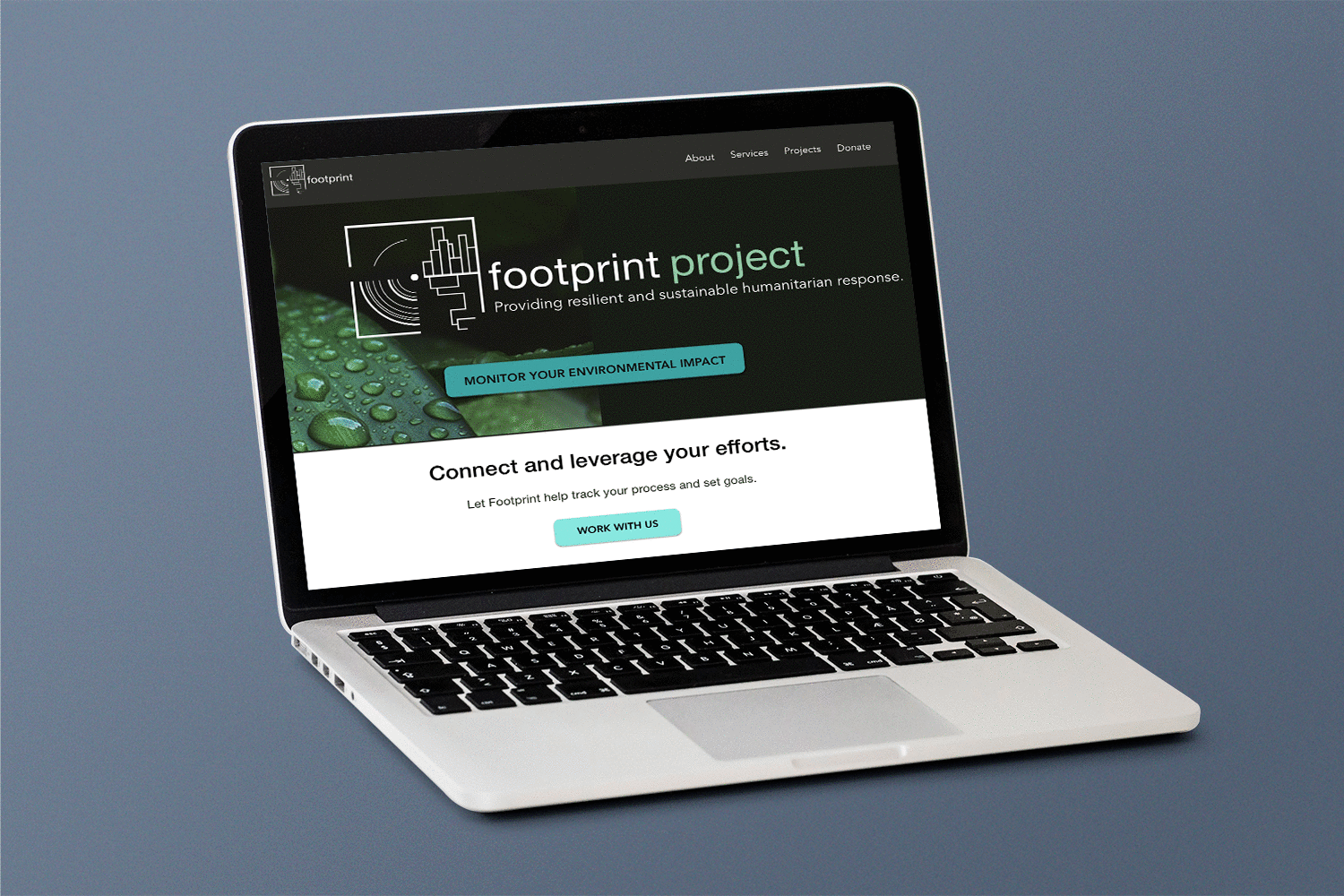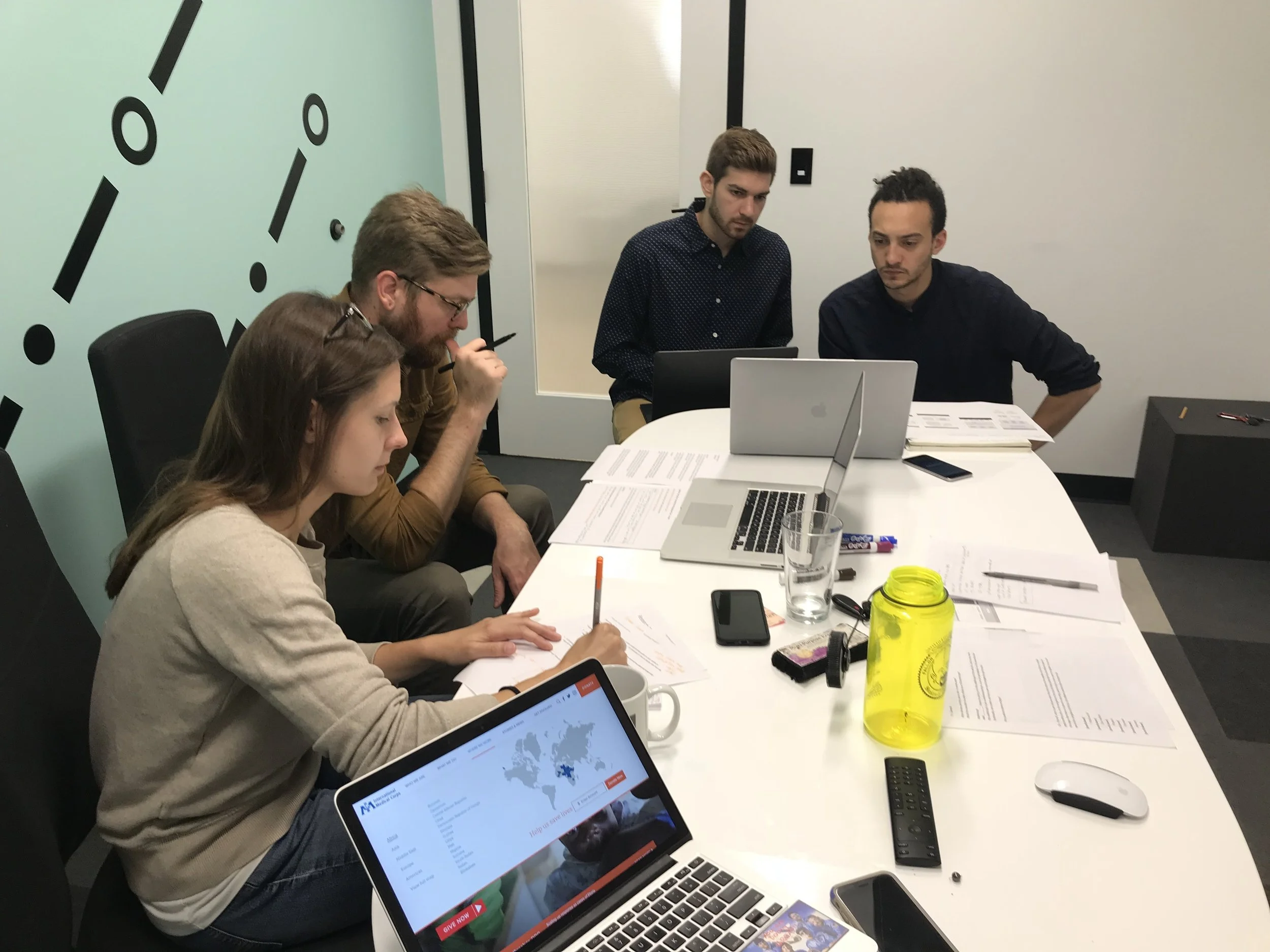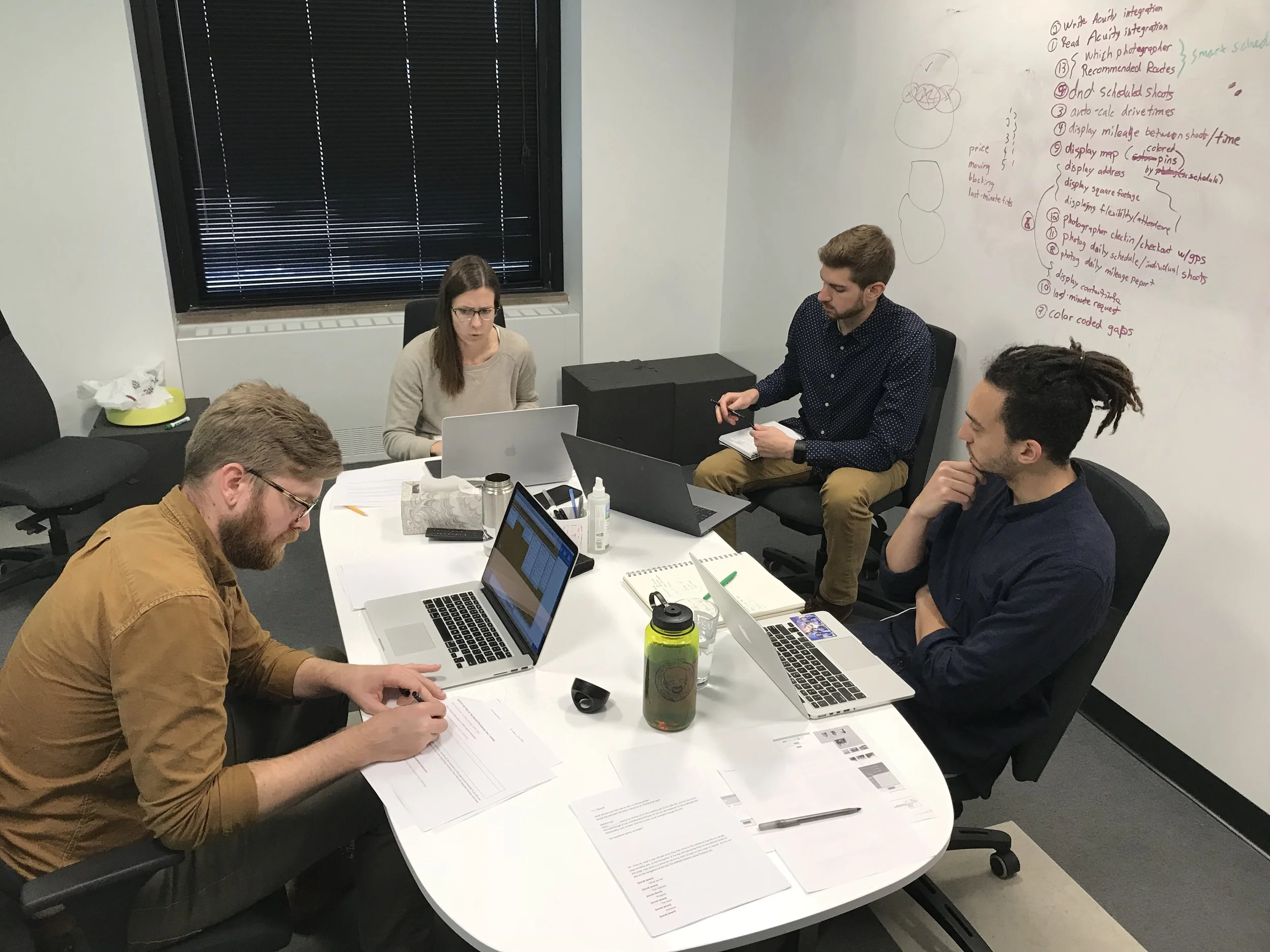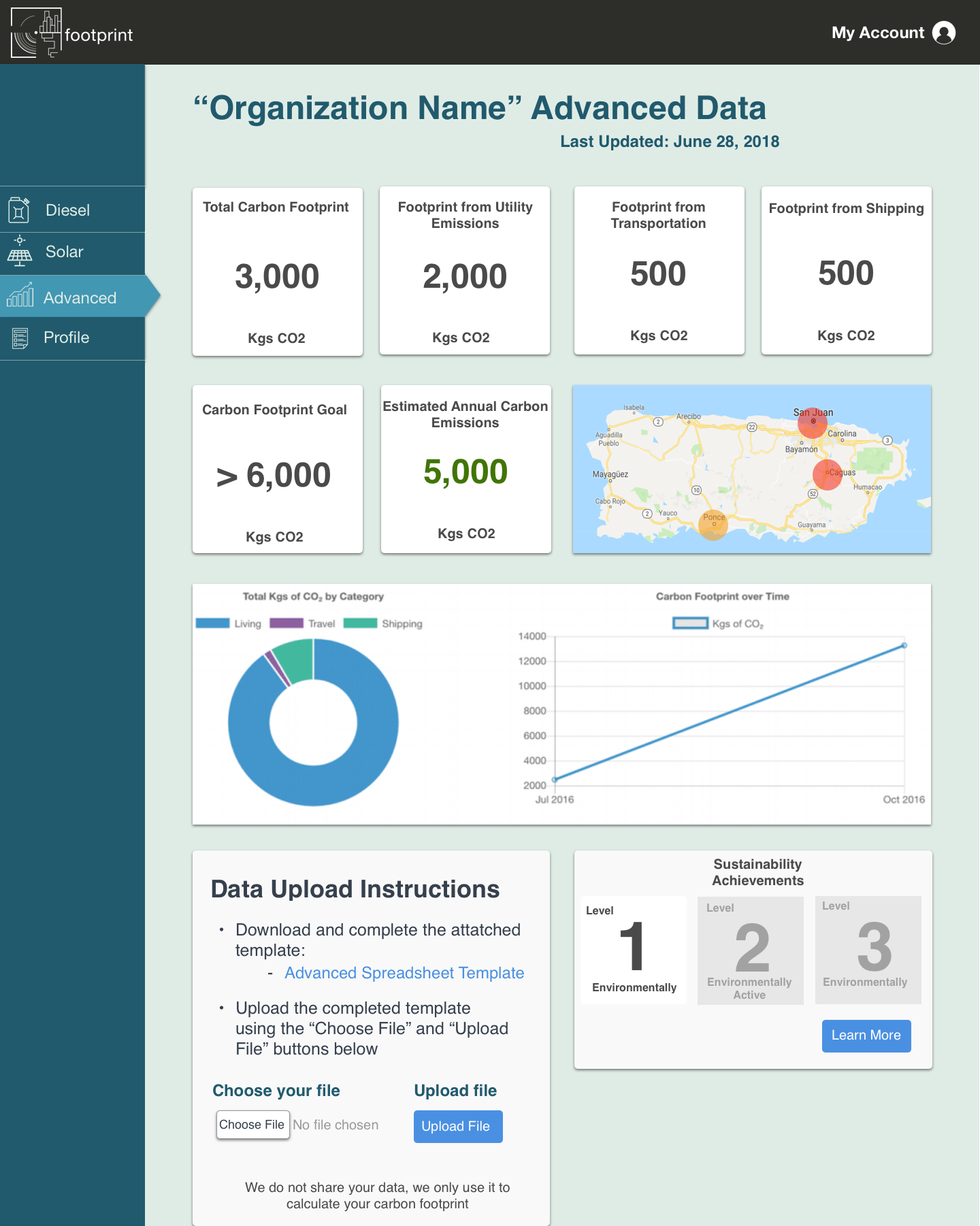Disaster relief organizations work diligently to provide people and communities in crisis situations the aid they need to get by as well as flourish in the future. In the process of providing a positive impact for these communities, disaster relief organizations often leave a significantly negative impact on the local environment they are working in. Using diesel powered generators to power relief efforts in areas off the grid creates significant carbon emissions which can realistically be offset by using natural renewable energy. That is where The Footprint Project comes in. By providing sustainability consulting to disaster relief organizations as well as a free to use environmental impact calculator, Footprint project can both lower organization's negative impacts on local environments as well as raise an organization's profile as environmentally transparent giving them a leg up when it comes to acquiring grant funding for future projects.
“Why would we provide water bottles when we could provide water filters?”
The Problem:
- Footprint Project’s main website and their environmental impact calculator were both extremely ineffective. The main website communicated a minuscule amount of information pertaining to what services Footprint Project provides or the benefit they can bring to your organization.
- Their environmental impact calculator was difficult to use and required the user to upload information on a CSV file that was poorly designed.
- The environmental impact calculator was stylistically very inconsistent with the rest of the website creating a very unusual experience.
The Solution
- Restructure the website to clearly demonstrate both what specific services Footprint project can provide to an organization that decides to partner with them, as well as why this service brings value to the organization and the environment.
- Improve the overall usability of the calculator and its data visualization by understanding what information the user has available and wants to see.
- Stylistically redesign the website to create a smooth and visually pleasing experience for the user.
The Deep Dive
In order to begin effectively redesigning Footprint’s web presence, it was imperative to understand how disaster relief organizations operated and who the primary users of the website and calculator were. By conducting a very deep dive into the world of disaster relief, a world filled with yellow tape and alphabet soup we would learn how these organizations get funding, where footprint fits in the jigsaw puzzle of disaster relief, and who within these organizations would have the required data and who would be interacting with Footprint's carbon footprint calculator. By conducting this research we determined the two personas we wanted to target: figures within the grant funding world, and logistics coordinators within disaster relief organizations. By identifying these two persona groups, it was possible to continue forward and schedule research interviews with professionals within these groups.
Interviews
Low-fidelity wireframes were generated based on usability tests and competitive audits performed during the preliminary deep dive. These wireframes were brought into research interviews with 6 participants operating within our two persona groups. Their locations were scattered around the world from Iraq to Minnesota and positions ranged from logistics coordinators and energy advisors to technology coordinators and humanitarian advisors. These interviews proved to be vital in our redesign process. It provided key insider information about who would be using the website, the environmental impact calculator and what kind of information potential grant funding partners wanted to see.
From these interviews it was learned that while it wasn't required that disaster organizations be transparent about their environmental impact, it was something that grant funding partners wanted to see; and since these grant funding partners essentially fund disaster organization relief, what they say goes. Lynne Marie Thomas, the senior humanitarian advisor at USAID's office of foreign disaster assistance highlighted the fact that any organization that is transparent about its own environmental impact and actively working to reduce its negative impact is more likely to receive grant funding than one that doesn't. It became imperative to highlight this information in Footprint's redesigned website.
Speaking with Simon Cowie- program director at International Medical Corps, and Pierre Yves Beauchemin-IMC's country logistics coordinator in Iraq and northern Syria we gained insights on who within a disaster relief organization would be tracking the org's environmental data (diesel spending, travel distances, supply shipment, etc) and inputting that data into the environmental impact calculator.
Prototyping
Leveraging everything learned in our research interviews, prototypes were made for the the redesigned Footprint Project website as well as a user dashboard for organizations to actively track their environmental impact.
Website Redesign
When redesigning Footprint's website the challenge was providing information that communicated value to our two main user groups: grant funders and program coordinators.
Where Footprint's current website lacks sufficient information about what services they provide, the redesigned website lists and provides further details about several possible services that can be provided by partnering with Footprint.
By displaying their own Carbon Footprint, Footprint project is both leading by example in terms of environmental transparency, and encouraging users to begin tracking their own organizations environmental impact by simply pressing the calculate button.
Sample data visualization also provides the user an example of what kind of data to expect up pressing the calculate button.
Visual examples of reports that can be generated by calculating environmental impact and how that can accelerate the donor grant funding process; a key value proposition.
Case studies of Footprint Project's past projects provides the user increased understanding of Footprint's process, capabilities, and visual impact. As Footprint grows as an organization more project examples with potentially greater operations can be displayed.
Users are then invited to make a donation or sign up for Footprint's newsletter to stay up to date with the good work that Footprint is currently doing as well as what they are planning for the future.
Environmental Impact Dashboard
A completely new environmental impact dashboard was designed for The Footprint Project. In the dashboard, the user will be able to upload data and review their organization's impact all in one place.
To populate the dashboard with data the user must first:
- Download the spreadsheet template provided
- Fill that spreadsheet with data
- Upload that spreadsheet back into the dashboard
After the spreadsheet has been uploaded the dashboard will populate with information reflecting the inputted data.
The user can calculate their diesel impact, the monetary and environmental impact transitioning to solar powered generators can provide, as well as more complete










